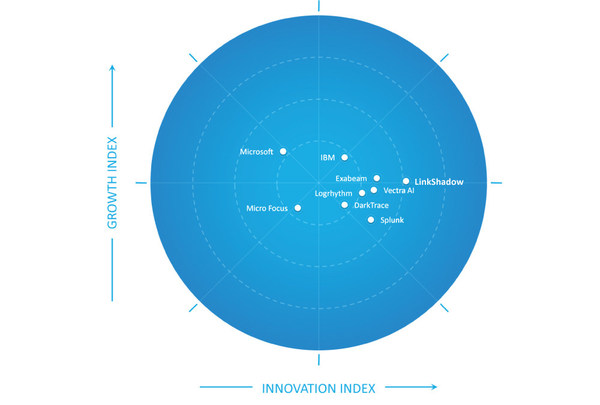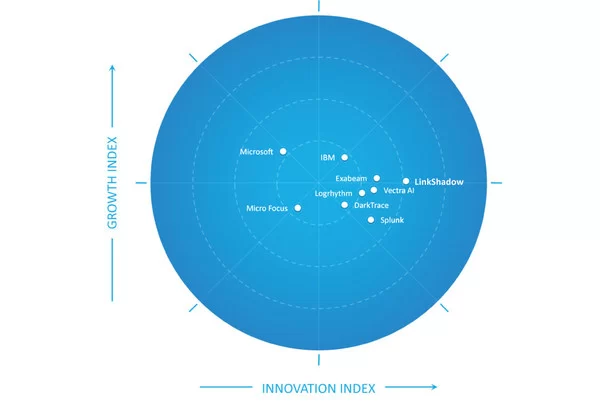– Third Quarter 2020 Net Revenue was $50.7 Million, within Guidance Range –
– Third Quarter 2020 Gross Profit was $24.1 Million, with Gross Margin of 47.5% –
– Third Quarter 2020 Operating Income was $2.5 Million, with Operating Margin of 4.9% –
– Third Quarter 2020 Net Income Attributable to CDEL was $3.0 Million, with Net Income Margin of 5.9% –
BEIJING, Aug. 27, 2020 — China Distance Education Holdings Limited (NYSE: DL) ("CDEL", or the "Company"), a leading provider of online education and value-added services for professionals and corporate clients in China, today announced unaudited financial results for the third quarter of fiscal year 2020 ended June 30, 2020.
Third Quarter Fiscal 2020 Financial and Operational Highlights
- Net revenue decreased by 17.9% to $50.7 million from $61.7 million in the prior year period.
- Total course enrollments were 738,300, an increase of 0.5% from the third quarter of fiscal 2019.
- Cash receipts from online course registration were $34.6 million, a 31.3% decrease from the third quarter of fiscal 2019.
- Gross profit decreased by 22.8% to $24.1 million from $31.2 million in the prior year period.
- Non-GAAP[1] gross profit decreased by 22.7% to $24.1 million from $31.2 million in the prior year period.
- Gross margin was 47.5%, compared with 50.5% in the prior year period. Non-GAAP[1] gross margin was 47.5%, compared with 50.5% in the prior year period.
- Operating income decreased by 75.0% to $2.5 million from $9.9 million in the prior year period.
- Non-GAAP[1] operating income decreased by 69.6% to $3.2 million from $10.4 million in the prior year period.
- Net income attributable to CDEL was $3.0 million, compared with net income attributable to CDEL of $9.4 million in the prior year period.
- Non-GAAP[1] net income attributable to CDEL was $3.7 million, compared with non- GAAP[1] net income attributable to CDEL of $10.0 million in the prior year period.
- Basic and diluted net income per American Depositary Share ("ADS") attributable to CDEL were $0.089 and $0.088, respectively, compared with basic and diluted net income per ADS attributable to CDEL of $0.282 and $0.281, respectively, for the third quarter of fiscal 2019. Each ADS represents four ordinary shares.
- Basic and diluted non-GAAP[1] net income per ADS attributable to CDEL were $0.111 and $0.109, respectively, compared with basic and diluted non-GAAP[1] net income per ADS attributable to CDEL of $0.299 and $0.296, respectively, for the third quarter of fiscal 2019.
- Cash flow from operations decreased by 59.2% to $7.2 million from $17.6 million in the third quarter of fiscal 2019.
|
[1] For more information about the non-GAAP financial measures contained in this press release, please see "Use of Non-GAAP Financial Measures" below.
|
Mr. Zhengdong Zhu, Chairman and CEO of CDEL, said, "In the third quarter of fiscal 2020, we reported net revenue of $50.7 million, within our guidance range. During the onset of the COVID-19 pandemic, in order to support our students across China with high-quality online professional education at a time when offline classes were suspended, we provided free online courses to students in Hubei province and significant discounts for certain online exam preparation courses to students outside Hubei. Our socially responsive actions resulted in a surge in enrollment in our second fiscal quarter as previously disclosed, effectively pulling forward the demand for our courses and thus dampening enrollment and cash receipts growth in our third fiscal quarter."
"We believe in the long-term growth prospects of online professional education in China, and expect online education will continue to transform how knowledge is delivered and how students learn. We remain committed to serving students with our high-quality courseware and compelling online educational solutions during this challenging time. We are confident that our comprehensive lifelong learning ecosystem will enable us to reach a broad and growing student audience, and extend convenience, flexibility and engagement to their learning experience," Mr. Zhu concluded.
Mr. Mark Marostica, Co-Chief Financial Officer of CDEL, added, "As anticipated, the decrease in cash receipts for our courses due to our socially responsive actions, together with the postponement of certain professional certification examinations, negatively impacted our revenue growth for the third fiscal quarter. In addition, a delay in the publication of certain legal exam preparation books further weakened our third quarter revenue growth. Despite these headwinds, we maintained a disciplined cost structure and achieved a non-GAAP operating margin of 6.2% for the quarter. With our fourth fiscal quarter well underway, we are further impacted by the postponement of a number of core professional certification examinations held in Beijing and several other cities. We remain focused on balancing growth with a keen focus on profitability."
Third Quarter Fiscal 2020 Financial Results
Net Revenue. Total net revenue decreased by 17.9% to $50.7 million in the third quarter of fiscal 2020 from $61.7 million in the third quarter of fiscal 2019. Net revenue from online education services, books and reference materials, and other sources contributed 78.9%, 12.8% and 8.3%, respectively, of total net revenues for the third quarter of fiscal 2020.
Online education services. Net revenue from online education services decreased by 8.1% to $40.0 million in the third quarter of fiscal 2020 from $43.5 million in the third quarter of fiscal 2019, primarily attributable to the decrease in revenue from the Company’s healthcare and accounting verticals due to the impact of COVID-19, stemming from the postponement of certain professional certification examinations across China and the aforementioned socially responsive actions the Company adopted, which resulted in a significant decline in cash receipts from online course registration in both the second and third fiscal quarters of 2020.
Books and reference materials. Net revenue from books and reference materials decreased by 33.8% to $6.5 million in the third quarter of fiscal 2020 from $9.8 million in the third quarter of fiscal 2019, primarily attributable to the delay in the publication of certain Legal Professional Qualification Examination books, due to the promulgation of new laws.
Others. Net revenue from other sources decreased by 49.8% to $4.2 million in the third quarter of fiscal 2020 from $8.4 million in the third quarter of fiscal 2019, primarily due to a significant decrease in revenue from the sale of college-related learning simulation software, and a significant decrease in the provision of offline training courses, resulting from the impact of COVID-19.
Cost of Sales. Cost of sales decreased by 12.8% to $26.6 million in the third quarter of fiscal 2020, from $30.6 million in the third quarter of fiscal 2019. Non-GAAP[1] cost of sales decreased by 13.0% to $26.6 million in the third quarter of fiscal 2020, from $30.6 million in the third quarter of fiscal 2019. The decrease in cost of sales was primarily attributable to a decrease in cost of books and reference materials and lecture fees.
Gross Profit and Gross Margin. Gross profit was $24.1 million in the third quarter of fiscal 2020, down 22.8% from $31.2 million in the prior year period. Non-GAAP[1] gross profit was $24.1 million, decreasing by 22.7% from $31.2 million in the prior year period. Gross margin was 47.5% in the third quarter of fiscal 2020, compared with 50.5% in the third quarter of fiscal 2019. Non-GAAP[1] gross margin was 47.5% in the third quarter of fiscal 2020, compared with 50.5% in the third quarter of fiscal 2019.
Operating Expenses. Total operating expenses increased by 5.6% to $23.2 million in the third quarter of fiscal 2020, from $22.0 million in the prior year period. Non-GAAP[1] total operating expenses increased by 5.0% to $22.6 million in the third quarter of fiscal 2020, from $21.5 million in the prior year period.
Selling expenses. Selling expenses increased by 4.6% to $17.8 million in the third quarter of fiscal 2020 from $17.0 million in the prior year period. Non-GAAP[1] selling expenses increased by 4.5% to $17.8 million in the third quarter of fiscal 2020, from $17.0 million in the prior year period. The increase was primarily driven by higher advertising and promotional expenses, and the increase in commission to agents.
General and administrative expenses. General and administrative expenses increased by 8.8% to $5.4 million in the third quarter of fiscal 2020 from $4.9 million in the prior year period. Non-GAAP[1] general and administrative expenses increased by 7.0% to $4.8 million in the third quarter of fiscal 2020, from $4.4 million in the prior year period. The increase was mainly due to the increase in share-based compensation expenses.
Income Tax Expenses. Income tax expense decreased by 77.1% to $0.6 million in the third quarter of fiscal 2020 from $2.5 million in the prior year period, primarily due to the decrease in taxable income in the third quarter of fiscal 2020.
Net Income Attributable to CDEL. As a result of the foregoing, net income attributable to CDEL was $3.0 million in the third quarter of fiscal 2020, compared with net income attributable to CDEL of $9.4 million in the prior year period. Non-GAAP[1] net income attributable to CDEL was $3.7 million in the third quarter of fiscal 2020, compared with non-GAAP[1] net income attributable to CDEL of $10.0 million in the prior year period.
Operating Cash Flow. Net operating cash inflow decreased by 59.2% to $7.2 million in the third quarter of fiscal 2020 from $17.6 million in the prior year period. The operating cash inflow was mainly attributable to net income before non-cash items generated in the third quarter of fiscal 2020. The increase in accrued expenses and other liabilities also contributed to the operating cash inflow. The operating cash inflow was partially offset by the decrease in deferred revenue and the decrease/increase in amount due to/from related parties.
Cash and Cash Equivalents, Term Deposits, Restricted Cash and Short-term Investments. Cash and cash equivalents, term deposits, restricted cash and short-term investments as of June 30, 2020 increased by 2.7% to $133.7 million from $130.2 million as of March 31, 2020, mainly due to the operating cash inflow generated in the third quarter of fiscal 2020 and the drawdown of an offshore loan of $20.0 million. The increase was partially offset by (i) the dividend distribution of $19.6 million, (ii) the repayment of an onshore loan of $2.8 million, (iii) the payment of an investment of $0.7 million and (iv) the capital expenditure of $0.6 million.
First Nine Months of Fiscal 2020 Financial Results
Net Revenue. Total net revenue increased by 0.6% to $144.0 million in the first nine months of fiscal 2020 from $143.1 million in the first nine months of fiscal 2019. Net revenue from online education services, books and reference materials, and other sources contributed 75.0%, 10.9% and 14.1%, respectively, of total net revenues for the first nine months of fiscal 2020.
Online education services. Net revenue from online education services increased by 11.9% to $107.9 million in the first nine months of fiscal 2020 from $96.5 million in the first nine months of fiscal 2019.
Books and reference materials. Net revenue from books and reference materials decreased by 27.2% to $15.8 million in the first nine months of fiscal 2020 from $21.6 million in the first nine months of fiscal 2019.
Others. Net revenue from other sources decreased by 18.9% to $20.3 million in the first nine months of fiscal 2020 from $25.0 million in the first nine months of fiscal 2019.
Cost of Sales. Cost of sales decreased by 8.4% to $72.8 million in the first nine months of fiscal 2020 from $79.5 million in the first nine months of fiscal 2019. Non-GAAP[1] cost of sales decreased by 8.5% to $72.7 million in the first nine months of fiscal 2020, from $79.4 million in the first nine months of fiscal 2019.
Gross Profit and Gross Margin. Gross profit was $71.2 million in the first nine months of fiscal 2020, up 11.9% from $63.7 million in the prior year period. Non-GAAP[1] gross profit was $71.3 million, increasing by 12.0% from $63.7 million in the prior year period. Gross margin was 49.5% in the first nine months of fiscal 2020, compared with 44.5% in the first nine months of fiscal 2019. Non-GAAP[1] gross margin was 49.5% in the first nine months of fiscal 2020, compared with 44.5% in the first nine months of fiscal 2019.
Operating Expenses. Total operating expenses increased by 9.7% to $69.3 million in the first nine months of fiscal 2020, from $63.2 million in the prior year period. Non-GAAP[1] total operating expenses increased by 9.4% to $67.5 million in the first nine months of fiscal 2020, from $61.7 million in the prior year period.
Selling expenses. Selling expenses increased by 15.3% to $52.3 million in the first nine months of fiscal 2020 from $45.3 million in the prior year period. Non-GAAP[1] selling expenses increased by 15.3% to $52.2 million in the first nine months of fiscal 2020, from $45.3 million in the prior year period.
General and administrative expenses. General and administrative expenses decreased by 4.7% to $17.0 million in the first nine months of fiscal 2020 from $17.9 million in the prior year period. Non-GAAP[1] general and administrative expenses decreased by 7.0% to $15.2 million in the first nine months of fiscal 2020, from $16.4 million in the prior year period.
Income Tax Expenses. Income tax expense was $1.3 million in the first nine months of fiscal 2020, compared with income tax expense of $2.1 million in the prior year period.
Net Income Attributable to CDEL. As a result of the foregoing, net income attributable to CDEL was $5.6 million in the first nine months of fiscal 2020, compared with net income attributable to CDEL of $7.5 million in the prior year period. Non-GAAP[1] net income attributable to CDEL was $7.5 million in the first nine months of fiscal 2020, compared with non-GAAP[1] net income attributable to CDEL of $9.0 million in the prior year period.
Operating Cash Flow. Net operating cash inflow decreased by 33.8% to $41.0 million in the first nine months of fiscal 2020 from $61.9 million in the prior year period.
Recent Developments Regarding the Non-binding "Going Private" Proposal
On June 8, 2020, the board of directors of the Company (the "Board") received a preliminary non-binding proposal letter (the "Proposal Letter") from Mr. Zhengdong Zhu, co-founder, chairman of the Board and chief executive officer of the Company ("Mr. Zhu"), Ms. Baohong Yin, co-founder of the Company, deputy chairman of the Board and the spouse of Mr. Zhu and their affiliated entity (collectively, the "Buyer Group") to acquire all of the outstanding ordinary shares of the Company, including ordinary shares represented by American depositary shares (the "ADSs", each representing four ordinary shares), for $2.27 in cash per ordinary share, or $9.08 in cash per ADS (the "Proposal"). On June 22, 2020, the Company announced that the Board had formed a special committee of independent directors (the "Special Committee") consisting of Ms. Carol Yu and Ms. Annabelle Yu Long to review and evaluate the Proposal, and the Special Committee had retained Goulston & Storrs PC as its United States legal counsel in connection with its review and evaluation of the Proposal. On July 29, 2020, the Company announced that the Special Committee had retained Duff & Phelps, LLC as its financial advisor in connection with its review and evaluation of the Proposal.
The Company cautions its shareholders and others considering trading in its securities that neither the Board nor the Special Committee has made any decision with respect to the Company’s response to the Proposal. There can be no assurance that any definitive offer will be made, that any agreement will be executed or that this or any other transaction will be approved or consummated. The Company does not undertake any obligation to provide any updates with respect to this or any other transaction, except as required under applicable law.
Outlook
For the fourth quarter of fiscal 2020, the Company expects to generate total net revenue in the range of $58.4 million to $61.8 million, representing year-over-year decline of approximately 15% to 10%, respectively.
For fiscal year 2020, the Company expects to generate total net revenue in the range of $202.4 million to $205.8 million, representing year-over-year decline of approximately 4.4% to 2.8%, respectively.
The above guidance reflects the Company’s current and preliminary view, which is subject to change, particularly in consideration of uncertainties related to the impact of COVID-19, including the postponement of certain professional examinations, the schedule of reopening of schools, and the schedule of resumption of provision of offline training courses, among others.
Conference Call
Management will hold a conference call at 8:00 a.m. Eastern Time on Thursday, August 27, 2020 (8:00 p.m. Beijing Time on Thursday, August 27, 2020) to discuss financial results and answer questions from investors and analysts. Details for the conference call are as follows:
All participants must use the link provided above to complete the online registration process at least 20 minutes in advance of the conference call. Upon registering, each participant will receive a participant dial-in number, Direct Event passcode, and a unique registrant ID, which will be used to join the conference call.
A telephone replay will be available two hours after the call until September 3, 2020 by dialing:
|
US Toll Free:
|
+1-855-452-5696
|
|
International:
|
+61-2-8199-0299
|
|
Mainland China:
|
400-632-2162
|
|
Hong Kong, China:
|
800-963-117
|
|
United Kingdom:
|
0808-234-0072
|
|
Replay Passcode:
|
9952634
|
Additionally, a live and archived webcast of the conference call will be available at http://ir.cdeledu.com.
About China Distance Education Holdings Limited
China Distance Education Holdings Limited is a leading provider of online education and value-added services for professionals and corporate clients in China. The courses offered by the Company through its websites are designed to help professionals seeking to obtain and maintain professional licenses and to enhance their job skills through our professional development courses in China in the areas of accounting, healthcare, engineering & construction, legal and other industries. The Company also offers online test preparation courses for self-taught learners pursuing higher education diplomas or degrees, and practical accounting training courses for college students and working professionals. In addition, the Company provides business services to corporate clients, including but not limited to tax advisory and accounting outsourcing services. For further information, please visit http://ir.cdeledu.com.
Safe Harbor Statement
This announcement contains forward-looking statements. These statements are made under the "safe harbor" provisions of the U.S. Private Securities Litigation Reform Act of 1995. These forward-looking statements can be identified by terminology such as "will," "may," "should," "potential," "continue," "expect," "predict," "anticipate," "future," "intend," "plan," "believe," "is/are likely to," "estimate" and similar statements. Among other things, the outlook for the fourth quarter and full fiscal year 2020 and quotations from management in this announcement, as well as the Company’s strategic and operational plans (in particular, the impact of COVID-19 on our businesses; the solutions we adopt to address such impact of COVID-19; balancing growth and profitability; the growth prospects of online professional education in China; as well as the anticipated benefits of our strategic growth initiatives, including the promotion of the Company’s life-long learning ecosystem) contain forward-looking statements. The Company may also make written or oral forward-looking statements in its periodic and annual reports to the SEC, in press releases and other written materials and in oral statements made by its officers, directors or employees to third parties. Statements that are not historical facts, including statements about the Company’s beliefs and expectations, are forward-looking statements. Forward-looking statements involve inherent risks and uncertainties. A number of factors could cause actual results to differ materially from those contained in any forward-looking statement, including but not limited to the following: the impact of the COVID-19 outbreak, the potential impact of the Proposal and any transaction in connection with the Proposal, our goals and growth strategies; future prospects and market acceptance of our courses and other products and services; our future business development and results of operations; projected revenues, profits, earnings and other estimated financial information; projected enrollment numbers; our plans to expand and enhance our courses and other products and services; anticipated benefits of acquisition or disposal of businesses, competition in the education and test preparation markets; and Chinese laws, regulations and policies, including those applicable to the Internet, Internet content providers, the education and telecommunications industries, mergers and acquisitions, taxation and foreign exchange. In addition, with respect to the "going private" Proposal, there can be no assurance that the Buyer Group will make any definitive offer to the Company, that any definitive agreement relating to the Proposal will be entered into between the Company and the Buyer Group or that a transaction based on the Proposal or any other similar transaction will be approved or consummated.
Further information regarding these and other risks is included in the Company’s annual report on Form 20-F and other documents filed or furnished with the SEC. All information provided in this press release is as of the date of this press release. The Company does not undertake any obligation to update any forward-looking statement, except as required under applicable law.
Statement Regarding Unaudited Financial Information
The unaudited financial information set forth in this press release is preliminary and subject to adjustments. Adjustments to the financial statements may be identified when audit work is performed for the year-end audit, which could result in significant differences from this preliminary unaudited financial information.
Use of Non-GAAP Financial Measures
To supplement the Company’s consolidated financial results presented in accordance with U.S. generally accepted accounting principles, or GAAP, the Company uses the following measures defined as non-GAAP financial measures: non-GAAP net income attributable to CDEL, operating income, gross profit, cost of sales, selling expenses, general and administrative expenses, net income margin attributable to CDEL, operating margin, gross profit margin, and basic and diluted earnings per ADS and per share attributable to CDEL. The presentation of these non-GAAP financial measures is not intended to be considered in isolation or as a substitute for the financial information prepared and presented in accordance with GAAP. For more information on these non-GAAP financial measures, please see the table captioned "Reconciliations of non-GAAP measures to comparable GAAP measures" set forth at the end of this release.
The Company believes that these non-GAAP financial measures provide meaningful supplemental information regarding its performance by excluding share-based compensation expenses. However, non-GAAP financial measures may not be indicative of the Company’s operating performance from a cash perspective. The Company believes that both management and investors benefit from these non-GAAP financial measures in assessing its performance and when planning and forecasting future periods. These non-GAAP financial measures also facilitate management’s internal comparisons to the Company’s historical performance and liquidity. The Company computes its non-GAAP financial measures using the same consistent method from quarter to quarter. The Company believes these non-GAAP financial measures are useful to investors in allowing for greater transparency with respect to supplemental information used by management in its financial and operational decision making. A limitation of excluding share-based compensation expenses from the above-mentioned line items and presenting these non-GAAP measures is that such items may continue to be for the foreseeable future a significant recurring expense in our business. Management compensates for this limitation by providing specific information regarding the GAAP amounts excluded from each non-GAAP measure. The accompanying table at the end of this release provides more detail on the reconciliations between GAAP financial measures that are most directly comparable to non-GAAP financial measures.
Contacts:
In China:
China Distance Education Holdings Limited
Jiao Jiao
Tel: +86-10-8231-9999 ext. 1826
Email: IR@cdeledu.com
The Piacente Group, Inc.
Xi Zhang
Tel: +86-10-6508-0677
E-mail: dl@tpg-ir.com
In the United States:
The Piacente Group, Inc.
Brandi Piacente
Tel: +1 212-481-2050
Email: dl@tpg-ir.com
(Financial Tables on Following Pages)
|
China Distance Education Holdings Limited
|
|
Unaudited Condensed Consolidated Balance Sheets
|
|
(in thousands of US Dollars, except number of shares and per share data)
|
|
|
|
|
|
|
|
|
September 30, 2019
|
|
June 30, 2020
|
|
|
Assets:
|
|
|
|
|
|
Current assets:
|
|
|
|
|
|
Cash and cash equivalents
|
67,977
|
|
83,927
|
|
|
Term deposits
|
–
|
|
4,954
|
|
|
Restricted cash
|
38,358
|
|
20,241
|
|
|
Short-term investments
|
22,118
|
|
24,550
|
|
|
Accounts receivable, net of allowance for doubtful accounts of US$1,648 and
US$1,282 as of June 30, 2020 and September 30, 2019, respectively
|
7,330
|
|
6,182
|
|
|
Inventories
|
4,232
|
|
5,713
|
|
|
Prepayment and other current assets
|
26,732
|
|
30,143
|
|
|
Amounts due from related parties
|
515
|
|
908
|
|
|
Deferred cost
|
1,427
|
|
2,104
|
|
|
Total current assets
|
168,689
|
|
178,722
|
|
|
|
|
|
|
|
|
Non-current assets:
|
|
|
|
|
|
Property, plant and equipment, net
|
37,935
|
|
40,732
|
|
|
Operating lease right of use asset
|
–
|
|
30,074
|
|
|
Goodwill, net
|
74,829
|
|
75,704
|
|
|
Long term investments
|
25,379
|
|
25,572
|
|
|
Other intangible assets, net
|
30,113
|
|
24,318
|
|
|
Deposit for purchase of non-current assets
|
4,448
|
|
1,552
|
|
|
Deferred tax assets
|
3,865
|
|
3,713
|
|
|
Other non-current assets
|
10,092
|
|
7,579
|
|
|
Total non-current assets
|
186,661
|
|
209,244
|
|
|
|
|
|
|
|
|
Total assets
|
355,350
|
|
387,966
|
|
|
|
|
|
|
|
|
Liabilities and equity:
|
|
|
|
|
|
Current liabilities:
|
|
|
|
|
|
Bank borrowings
|
38,502
|
|
7,199
|
|
|
Accrued expenses and other liabilities (including accrued expenses and other
liabilities of the consolidated VIE without recourse to China Distance Education
Holdings Limited of US$47,280 and US$35,491 as of June 30, 2020 and September
30, 2019, respectively)
|
38,267
|
|
49,950
|
|
|
Amount due to related parties
|
600
|
|
687
|
|
|
Income tax payable (including income tax payable of the consolidated VIE without
recourse to China Distance Education Holdings Limited of US$6,942 and US$8,188
as of June 30, 2020 and September 30, 2019, respectively)
|
10,899
|
|
8,579
|
|
|
Deferred revenue, current portion (including deferred revenue of the consolidated
VIE without recourse to China Distance Education Holdings Limited of US$71,477
and US$93,364 as of June 30, 2020 and September 30, 2019, respectively)
|
94,202
|
|
72,253
|
|
|
Refundable fees – current portion (including refundable fees of the consolidated VIE
without recourse to China Distance Education Holdings Limited of US$24 and
US$435 as of June 30, 2020 and September 30, 2019, respectively)
|
435
|
|
24
|
|
|
Operating lease liability – current portion (including operating lease liability of the
consolidated VIE without recourse to China Distance Education Holdings Limited
of US$3,614 and nil as of June 30, 2020 and September 30, 2019, respectively)
|
–
|
|
3,967
|
|
|
Total current liabilities
|
182,905
|
|
142,659
|
|
|
|
|
|
|
|
|
Non-current liabilities:
|
|
|
|
|
|
Deferred revenue, non-current portion (including deferred revenue of the
consolidated VIE without recourse to China Distance Education Holdings Limited
of US$80,430 and US$33,564 as of June 30, 2020 and September 30, 2019,
respectively)
|
33,564
|
|
80,430
|
|
|
Refundable fees – non-current portion (including refundable fees of the consolidated
VIE without recourse to China Distance Education Holdings Limited of US$3,944
and US$2,440 as of June 30, 2020 and September 30, 2019, respectively)
|
2,440
|
|
3,944
|
|
|
Long-term bank borrowing
|
–
|
|
16,000
|
|
|
Deferred tax liabilities
|
12,695
|
|
6,410
|
|
|
Operating lease liability – non-current portion (including operating lease liability of
the consolidated VIE without recourse to China Distance Education Holdings
Limited of US$24,536 and nil as of June 30, 2020 and September 30, 2019,
respectively)
|
–
|
|
24,927
|
|
|
Total non-current liabilities
|
48,699
|
|
131,711
|
|
|
Total liabilities
|
231,604
|
|
274,370
|
|
|
|
|
|
|
|
|
Equity:
|
|
|
|
|
|
Ordinary shares (par value of US$0.0001 per share; 500,000,000 shares authorized;
135,320,433 and 134,210,745 shares issued and outstanding at June 30, 2020 and
September 30, 2019, respectively)
|
13
|
|
14
|
|
|
Additional paid-in capital
|
24,507
|
|
26,629
|
|
|
Accumulated other comprehensive loss
|
(12,357)
|
|
(8,805)
|
|
|
Retained earnings
|
60,668
|
|
46,612
|
|
|
Total China Distance Education Holdings Limited shareholder’s equity
|
72,831
|
|
64,450
|
|
Noncontrolling interests
|
50,915
|
|
49,146
|
|
|
Total equity
|
123,746
|
|
113,596
|
|
|
Total liabilities and equity
|
355,350
|
|
387,966
|
|
|
|
|
|
|
|
|
China Distance Education Holdings Limited
|
|
Unaudited Condensed Consolidated Statements Of Operations
|
|
(in thousands of US dollars, except number of shares, per share and per ADS data)
|
|
|
Three Months Ended June 30,
|
|
2019
|
|
2020
|
|
|
|
|
|
Sales, net of business tax, value-added tax and related surcharges:
|
|
|
|
|
Online education services
|
43,529
|
|
39,996
|
|
Books and reference materials
|
9,826
|
|
6,507
|
|
Others
|
8,392
|
|
4,211
|
|
– Sale of learning simulation software
|
2,665
|
|
833
|
|
– Business start-up training services
|
886
|
|
175
|
|
– Others
|
4,841
|
|
3,203
|
|
Total net revenues
|
61,747
|
|
50,714
|
|
|
|
|
|
|
Cost of sales
|
|
|
|
|
Cost of services and others
|
(20,836)
|
|
(19,767)
|
|
Cost of tangible goods sold
|
(9,735)
|
|
(6,882)
|
|
Total cost of sales
|
(30,571)
|
|
(26,649)
|
|
|
|
|
|
|
Gross profit
|
31,176
|
|
24,065
|
|
|
|
|
|
Operating expenses
|
|
|
|
|
Selling expenses
|
(17,043)
|
|
(17,828)
|
|
General and administrative expenses
|
(4,947)
|
|
(5,383)
|
|
Total operating expenses
|
(21,990)
|
|
(23,211)
|
|
Other operating income
|
665
|
|
1,607
|
|
|
|
|
|
|
Operating income
|
9,851
|
|
2,461
|
|
|
|
|
|
Interest income
|
526
|
|
582
|
|
Interest expense
|
(703)
|
|
(216)
|
|
Gain from disposal of an investment
|
318
|
|
–
|
|
Exchange gain/(loss)
|
1,996
|
|
(243)
|
|
|
|
|
|
|
Income before income taxes
|
11,988
|
|
2,584
|
|
Income tax expense
|
(2,460)
|
|
(564)
|
|
Loss from equity method investments
|
(656)
|
|
(570)
|
|
|
|
|
|
Net income
|
8,872
|
|
1,450
|
|
Net loss attributable to noncontrolling interest
|
575
|
|
1,566
|
|
Net income attributable to China Distance Education Holdings Limited
|
9,447
|
|
3,016
|
|
Net income per share attributable to China Distance Education Holdings
Limited:
|
|
|
|
|
Net income attributable to China Distance Education Holdings Limited
shareholders
|
|
|
|
|
Basic
|
0.070
|
|
0.022
|
|
Diluted
|
0.070
|
|
0.022
|
|
Net income per ADS attributable to China Distance Education Holdings
Limited:
|
|
|
|
|
Net income attributable to China Distance Education Holdings Limited
shareholders
|
|
|
|
|
Basic
|
0.282
|
|
0.089
|
|
Diluted
|
0.281
|
|
0.088
|
|
|
|
|
|
Weighted average shares used in calculating net income per share
attributable to China Distance Education Holdings Limited:
|
|
|
|
|
Basic
|
133,037,866
|
|
134,005,063
|
|
Diluted
|
134,342,150
|
|
135,441,737
|
|
China Distance Education Holdings Limited
|
|
Unaudited Condensed Consolidated Statements Of Operations
|
|
(in thousands of US dollars, except number of shares, per share and per ADS data)
|
|
|
Nine Months Ended June 30,
|
|
2019
|
|
2020
|
|
|
|
|
|
Sales, net of business tax, value-added tax and related surcharges:
|
|
|
|
|
Online education services
|
96,450
|
|
107,939
|
|
Books and reference materials
|
21,632
|
|
15,751
|
|
Others
|
25,049
|
|
20,322
|
|
– Sale of learning simulation software
|
9,630
|
|
7,295
|
|
– Business start-up training services
|
2,258
|
|
1,826
|
|
– Others
|
13,161
|
|
11,201
|
|
Total net revenues
|
143,131
|
|
144,012
|
|
|
|
|
|
|
Cost of sales
|
|
|
|
|
Cost of services and others
|
(62,461)
|
|
(57,938)
|
|
Cost of tangible goods sold
|
(16,997)
|
|
(14,840)
|
|
Total cost of sales
|
(79,458)
|
|
(72,778)
|
|
|
|
|
|
|
Gross profit
|
63,673
|
|
71,234
|
|
|
|
|
|
Operating expenses
|
|
|
|
|
Selling expenses
|
(45,327)
|
|
(52,273)
|
|
General and administrative expenses
|
(17,855)
|
|
(17,016)
|
|
Total operating expenses
|
(63,182)
|
|
(69,289)
|
|
Change in fair value of contingent consideration payable
|
695
|
|
–
|
|
Other operating income
|
2,434
|
|
3,932
|
|
|
|
|
|
|
Operating income
|
3,620
|
|
5,877
|
|
|
|
|
|
Interest income
|
1,714
|
|
1,952
|
|
Interest expense
|
(2,294)
|
|
(901)
|
|
Gain from disposal of an investment
|
318
|
|
–
|
|
Gain from deconsolidation of a subsidiary
|
6,869
|
|
–
|
|
Exchange loss
|
(104)
|
|
(1,154)
|
|
|
|
|
|
|
Income before income taxes
|
10,123
|
|
5,774
|
|
Income tax expense
|
(2,077)
|
|
(1,259)
|
|
Loss from equity method investments
|
(1,019)
|
|
(847)
|
|
|
|
|
|
Net income
|
7,027
|
|
3,668
|
|
Net loss attributable to noncontrolling interest
|
457
|
|
1,897
|
|
Net income attributable to China Distance Education Holdings Limited
|
7,484
|
|
5,565
|
|
Net income per share attributable to China Distance Education Holdings
Limited:
|
|
|
|
|
Net income attributable to China Distance Education Holdings Limited
shareholders
|
|
|
|
|
Basic
|
0.056
|
|
0.041
|
|
Diluted
|
0.056
|
|
0.041
|
|
Net income per ADS attributable to China Distance Education Holdings
Limited:
|
|
|
|
|
Net income attributable to China Distance Education Holdings Limited
shareholders
|
|
|
|
|
Basic
|
0.224
|
|
0.165
|
|
Diluted
|
0.223
|
|
0.165
|
|
|
|
|
|
Weighted average shares used in calculating net income per share
attributable to China Distance Education Holdings Limited:
|
|
|
|
|
Basic
|
132,946,829
|
|
133,808,589
|
|
Diluted
|
134,072,148
|
|
135,124,141
|
|
China Distance Education Holdings Limited
|
|
Reconciliations of non-GAAP measures to comparable GAAP measures
|
|
(In thousands of US Dollars, except number of shares, per share and per ADS data)
|
|
|
|
|
|
Three Months Ended June 30,
|
|
|
2019
|
|
2020
|
|
|
(Unaudited)
|
|
(Unaudited)
|
|
|
|
|
|
|
Cost of sales
|
|
30,571
|
|
26,649
|
|
Share-based compensation expense in cost of sales
|
|
–
|
|
45
|
|
Non-GAAP cost of sales
|
|
30,571
|
|
26,604
|
|
|
|
|
|
|
Selling expenses
|
|
17,043
|
|
17,828
|
|
Share-based compensation expense in selling expenses
|
|
–
|
|
19
|
|
Non-GAAP selling expenses
|
|
17,043
|
|
17,809
|
|
|
|
|
|
|
General and administrative expenses
|
|
4,947
|
|
5,383
|
|
Share-based compensation expense in general and administrative expenses
|
|
503
|
|
626
|
|
Non-GAAP general and administrative expenses
|
|
4,444
|
|
4,757
|
|
|
|
|
|
|
Gross profit
|
|
31,176
|
|
24,065
|
|
Share-based compensation expenses
|
|
–
|
|
45
|
|
Non-GAAP gross profit
|
|
31,176
|
|
24,110
|
|
|
|
|
|
|
Gross profit margin
|
|
50.5%
|
|
47.5%
|
|
Non-GAAP gross profit margin
|
|
50.5%
|
|
47.5%
|
|
|
|
|
|
|
Operating income
|
|
9,851
|
|
2,461
|
|
Share-based compensation expenses
|
|
503
|
|
690
|
|
Non-GAAP operating income
|
|
10,354
|
|
3,151
|
|
|
|
|
|
|
Operating margin
|
|
16.0%
|
|
4.9%
|
|
Non-GAAP operating margin
|
|
16.8%
|
|
6.2%
|
|
|
|
|
|
|
Net income attributable to CDEL
|
|
9,447
|
|
3,016
|
|
Share-based compensation expense
|
|
503
|
|
690
|
|
Non-GAAP net income attributable to CDEL
|
|
9,950
|
|
3,706
|
|
|
|
|
|
|
Net income margin attributable to CDEL
|
|
15.3%
|
|
5.9%
|
|
Non-GAAP net income margin attributable to CDEL
|
|
16.1%
|
|
7.3%
|
|
|
|
|
|
|
Net income per share attributable to CDEL—basic
|
|
0.070
|
|
0.022
|
|
Net income per share attributable to CDEL—diluted
|
|
0.070
|
|
0.022
|
|
Non-GAAP net income per share attributable to CDEL—basic
|
|
0.075
|
|
0.028
|
|
Non-GAAP net income per share attributable to CDEL—diluted
|
|
0.074
|
|
0.027
|
|
|
|
|
|
|
Net income per ADS attributable to China Distance Education Holdings Limited
shareholders—basic (note 1)
|
|
0.282
|
|
0.089
|
|
Net income per ADS attributable to China Distance Education Holdings Limited
shareholders—diluted (note 1)
|
|
0.281
|
|
0.088
|
|
Non-GAAP net income per ADS attributable to China Distance Education Holdings
Limited shareholders—basic (note 1)
|
|
0.299
|
|
0.111
|
|
Non-GAAP net income per ADS attributable to China Distance Education Holdings
Limited shareholders—diluted (note 1)
|
|
0.296
|
|
0.109
|
|
|
|
|
|
|
Weighted average shares used in calculating basic net income per share attributable
to China Distance Education Holdings Limited
|
|
133,037,866
|
|
134,005,063
|
|
Weighted average shares used in calculating diluted net income per share
attributable to China Distance Education Holdings Limited
|
|
134,342,150
|
|
135,441,737
|
|
Weighted average shares used in calculating basic non-GAAP net income per share
attributable to China Distance Education Holdings Limited
|
|
133,037,866
|
|
134,005,063
|
|
Weighted average shares used in calculating diluted non-GAAP net income per share
attributable to China Distance Education Holdings Limited
|
|
134,342,150
|
|
135,441,737
|
|
|
|
|
|
Note 1: Each ADS represents four ordinary shares
|
China Distance Education Holdings Limited
|
|
Reconciliations of non-GAAP measures to comparable GAAP measures
|
|
(In thousands of US Dollars, except number of shares, per share and per ADS data)
|
|
|
|
|
|
Nine Months Ended June 30,
|
|
|
2019
|
|
2020
|
|
|
(Unaudited)
|
|
(Unaudited)
|
|
|
|
|
|
|
Cost of sales
|
|
79,458
|
|
72,778
|
|
Share-based compensation expense in cost of sales
|
|
23
|
|
95
|
|
Non-GAAP cost of sales
|
|
79,435
|
|
72,683
|
|
|
|
|
|
|
Selling expenses
|
|
45,327
|
|
52,273
|
|
Share-based compensation expense in selling expenses
|
|
10
|
|
39
|
|
Non-GAAP selling expenses
|
|
45,317
|
|
52,234
|
|
|
|
|
|
|
General and administrative expenses
|
|
17,855
|
|
17,016
|
|
Share-based compensation expense in general and administrative expenses
|
|
1,482
|
|
1,795
|
|
Non-GAAP general and administrative expenses
|
|
16,373
|
|
15,221
|
|
|
|
|
|
|
Gross profit
|
|
63,673
|
|
71,234
|
|
Share-based compensation expenses
|
|
23
|
|
95
|
|
Non-GAAP gross profit
|
|
63,696
|
|
71,329
|
|
|
|
|
|
|
Gross profit margin
|
|
44.5%
|
|
49.5%
|
|
Non-GAAP gross profit margin
|
|
44.5%
|
|
49.5%
|
|
|
|
|
|
|
Operating income
|
|
3,620
|
|
5,877
|
|
Share-based compensation expenses
|
|
1,515
|
|
1,929
|
|
Non-GAAP operating income
|
|
5,135
|
|
7,806
|
|
|
|
|
|
|
Operating margin
|
|
2.5%
|
|
4.1%
|
|
Non-GAAP operating margin
|
|
3.6%
|
|
5.4%
|
|
|
|
|
|
|
Net income attributable to CDEL
|
|
7,484
|
|
5,565
|
|
Share-based compensation expense
|
|
1,515
|
|
1,929
|
|
Non-GAAP net income attributable to CDEL
|
|
8,999
|
|
7,494
|
|
|
|
|
|
|
Net income margin attributable to CDEL
|
|
5.2%
|
|
3.9%
|
|
Non-GAAP net income margin attributable to CDEL
|
|
6.3%
|
|
5.2%
|
|
|
|
|
|
|
Net income per share attributable to CDEL—basic
|
|
0.056
|
|
0.041
|
|
Net income per share attributable to CDEL—diluted
|
|
0.056
|
|
0.041
|
|
Non-GAAP net income per share attributable to CDEL—basic
|
|
0.068
|
|
0.056
|
|
Non-GAAP net income per share attributable to CDEL—diluted
|
|
0.067
|
|
0.055
|
|
|
|
|
|
|
Net income per ADS attributable to China Distance Education Holdings Limited
shareholders—basic (note 1)
|
|
0.224
|
|
0.165
|
|
Net income per ADS attributable to China Distance Education Holdings Limited
shareholders—diluted (note 1)
|
|
0.223
|
|
0.165
|
|
Non-GAAP net income per ADS attributable to China Distance Education Holdings
Limited shareholders—basic (note 1)
|
|
0.271
|
|
0.224
|
|
Non-GAAP net income per ADS attributable to China Distance Education Holdings
Limited shareholders—diluted (note 1)
|
|
0.269
|
|
0.222
|
|
|
|
|
|
|
Weighted average shares used in calculating basic net income per share attributable
to China Distance Education Holdings Limited
|
|
132,946,829
|
|
133,808,589
|
|
Weighted average shares used in calculating diluted net income per share
attributable to China Distance Education Holdings Limited
|
|
134,072,148
|
|
135,124,141
|
|
Weighted average shares used in calculating basic non-GAAP net income per share
attributable to China Distance Education Holdings Limited
|
|
132,946,829
|
|
133,808,589
|
|
Weighted average shares used in calculating diluted non-GAAP net income per
share attributable to China Distance Education Holdings Limited
|
|
134,072,148
|
|
135,124,141
|
|
|
|
|
|
Note 1: Each ADS represents four ordinary shares














